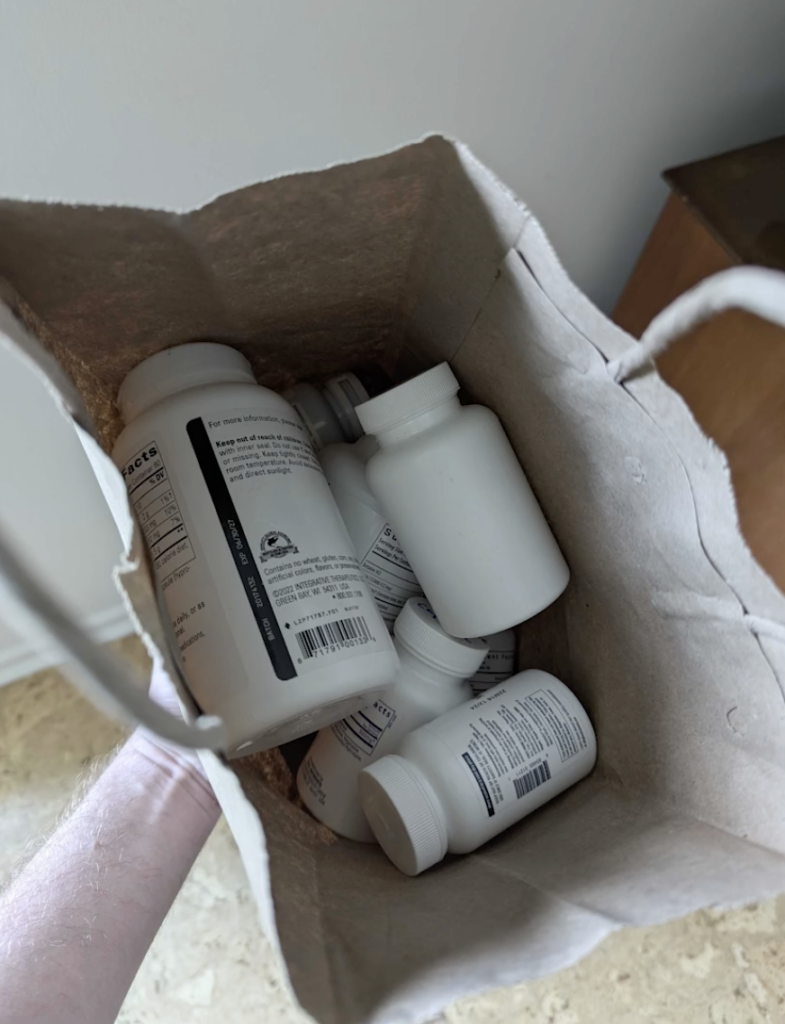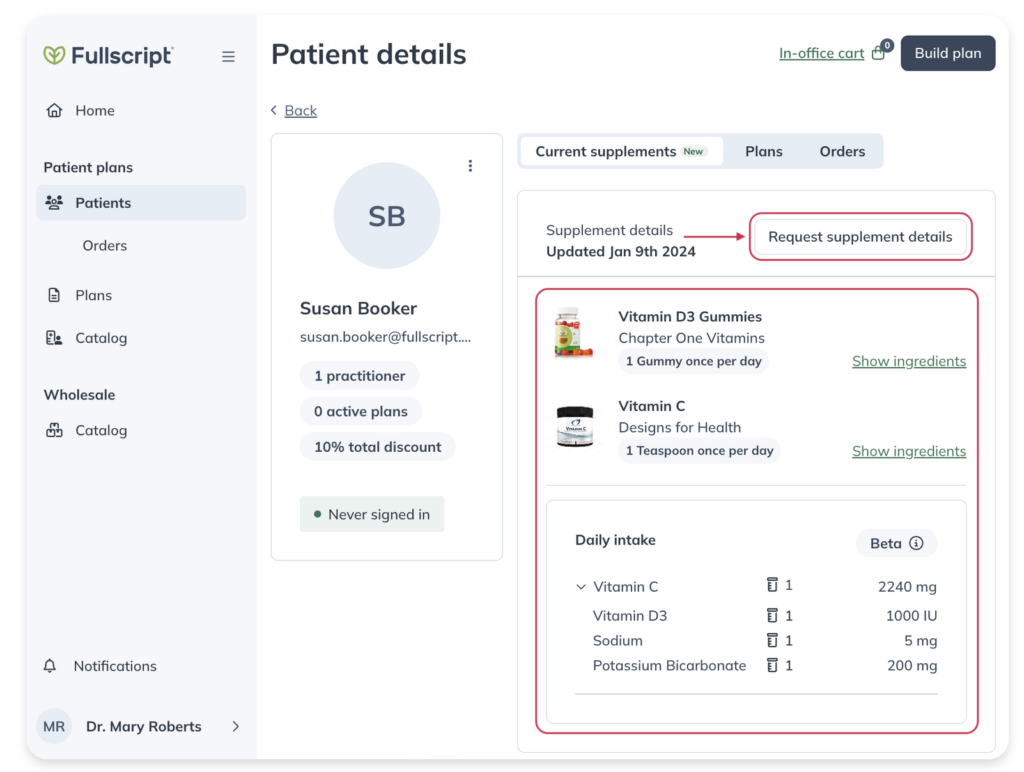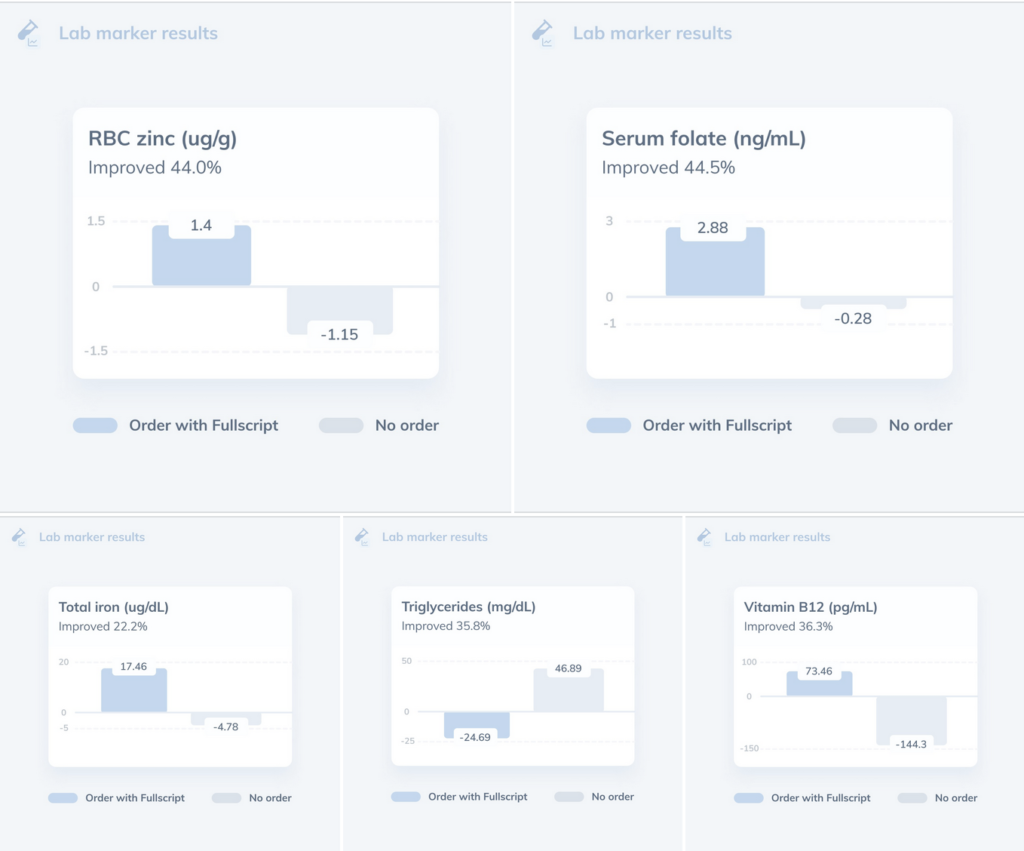
Diagnostic testing is an essential element of modern clinical practice. But for many practitioners, it is also a major source of headaches.
Multiple accounts with different labs, opaque pricing, variations in insurance coverage, tracking patient compliance, compiling and interpreting results, scheduling follow-up visits, translating data into patient-friendly treatment plans….let’s be honest: diagnostic testing is fraught with hassles.
Fullscript, the tech company that transformed dispensing of dietary supplements, now aims to minimize the lab test hassle factor by consolidating a wide array of tests—both conventional and “specialty”—on a single easy-to-use platform.
The new Fullscript diagnostics component also provides practitioners with advanced tools to monitor patient engagement and interpret results. The diagnostics platform dovetails with most common electronic medical records systems.

Put simply, Fullscript wants to simplify the gnarly world of lab test management in the same way that it was able to improve the process for dispensing of supplements, herbs, and nutritional products.
Unifying a Fragmented Field
“Fullscript started out in supplements because that was one of the biggest burdens for functional and integrative practitioners,” says Jeff Gladd, MD, Fullscript’s Chief Medical Officer.
Traditionally, clinicians who dispensed in their clinics had to set up multiple accounts with different brands, each with its own product catalog, own fulfillment system, and billing process. Those who maintained in-clinic formularies had to manage inventory, a daunting task.
Over the last decade, Fullscript, with offices in Ottawa, Ontario and Manchester, NH, has worked hard to change that by creating a comprehensive platform for recommending and dispensing supplements delivered directly to patients. The platform handles billing, tracks orders and reorders, and provides guidance tools to help practitioners optimize supplement protocols while minimizing product and ingredient redundancies.
Dr. Gladd said client surveys and ad hoc requests gave Fullscript a clear signal that many practitioners found lab test management to be similarly burdensome, tedious, and in need of consolidation. A primary care physician himself, he says he recognized the problems.

“You have to deal with all these different labs, and set up different accounts. And then you recommend tests, but how do you know if the patient actually received the kit or did the test? You have to log into different dashboards to get the results. And then there’s scheduling the follow-up visits to review results, which come in from the labs through different portals. It creates a very fragmented experience for patients and practitioners alike.”
He added that practitioners who do not have staff to track down and collate test data prior to a follow-up visit, will end up doing this work themselves, usually during the visits. This detracts from time and attention given to the patients.
“Labs was the next step for us,” Gladd said in an interview with Holistic Primary Care.
“We asked ourselves: How can Fullscript give providers and patients the same streamlined experience they have with supplements, in diagnostics? We wanted to give providers the ability to manage end-to-end patient care from diagnostics to treatment maintenance all in one place. Our overall goal is to streamline the workflow and deliver whole person care at scale.”
Streamlining Workflow
Fullscript announced the advent of its new diagnostic testing component in early July, and quickly amassed a waiting list of more than 11,000 interested practitioners. After weeks of beta testing with a small cohort, the company enrolled those on the waiting list in mid-August. A full roll-out is expected by the end of October.
The platform provides a one-stop where clinicians can order and track “specialty” functional diagnostic tests from diverse labs including Genova, Precision Analytical (DUTCH test), Diagnostic Solutions, Doctor’s Data, as well as conventional blood tests. Fullscript has a relationship with Quest Diagnostics, so the entire catalog of Quest tests is available.
Dr. Gladd noted that Quest now has “a huge focus on whole-person care. They’re pushing toward what’s the best way to assess pre-diabetes, cardiovascular health. They have an incredible evidence base for their cardiovascular assessments. So, we have the Quest catalog that we’re leveraging. To be able now to order labs, review those labs, and build your treatment plans all on the same platforms, removes a significant amount of burden from practitioners.”
Fullscript will add new lab partners as use of the platform grows, and the team gathers feedback and requests from customers and key opinion leaders in the field.
While insurance plans will cover some of the basic conventional tests, they generally exclude things like stool testing, microbiome analysis, food allergy testing, genomics, and other types of functional medicine testing. These end up being big out-of-pocket cost for patients. Gladd stressed that Fullscript’s lab partnerships will ensure transparent and competitive pricing that will minimize the financial strain on patients.
Minimizing Guesswork
Tieraona Low Dog, MD, a member of the Fullscript advisory board said in a webinar that the platform’s ability to consolidate diagnostic testing has the potential not only to improve practice efficiency, but to positively impact clinical outcomes.
“Supplementation without testing would be like prescribing a statin drug without knowing what a patient’s cholesterol levels are,” she said. “I’m an advocate for testing what you can. Having the labs all in one space so it is easy for me to see, and easy for me to evaluate is so crucial.”

But the diagnostics platform is definitely not a “test-to-treat” scheme where doctors order tests that inevitably drive supplement sales and practice revenue. The tests offered on Fullscript are not in any way linked to supplement brands or product sales.
Nor is the diagnostics platform intended to create a revenue source based on testing. Dr. Gladd stressed that practitioners cannot add a profit margin on tests ordered via Fullscript. However, the system does offer the option of charging interpretation fees, to compensate for time and work involved in reviewing and analyzing test results.
Not the First
Fullscript is not the first company in the functional medicine space to take on the challenge of simplifying lab test management.
Professional Coop Services began doing just that in 2001, providing licensed medical practitioners convenient access to a carefully curated list of tests. By aggregating the purchasing power of thousands of smaller relatively low-volume clinics, PCS’s co-op model enabled its practitioner clients to obtain tests at the sort of discount prices the labs usually reserve for large institutions. PCS has a sterling reputation for integrity and client support that has won it a dedicated and loyal practitioner cohort.
More recently, Rupa Health entered the market with a high-tech, one-dashboard system providing practitioners with access to over 3,000 tests from 33 different functional medicine specialty labs. Rupa, which raised $20 million in venture capital in 2022, has high visibility in the personalized medicine and concierge clinic space. Their system is designed to interface with commonly used EMRs, and boasts a large and ever-expanding library of webinars and educational materials.
But Fullscript has several advantages over the established players in the functional diagnostics space. For one, it has a massive base of loyal practitioner clients already using the platform to manage dietary supplements dispensing.
Essentially an IT solutions company, Fullscript greatly expanded its client base by merging with or acquiring its main supplement distribution competitors: Natural Partners and Emerson Ecologics. Both of those companies had deep and longstanding roots in the naturopathic, holistic, and functional medicine markets.
Those acquisitions also gave Fullscript five product distribution centers located all over the country. In addition to myriad supplement products, the centers can now stock and deploy a wide array of test kits, meaning that patients of Fullscript practitioners will get the kits and related materials very quickly.
Fullscript is also well-funded. In November 2021, two venture capital firms–HGGC and Snapdragon Capital Partners–invested $240 million the company.
Dr. Gladd emphasized that Fullscript’s entry into diagnostics is not motivated by a desire to push more tests. Rather it is one more step toward the company’s overall goal of optimizing practitioner workflow, making health-centric medicine more viable for practitioners and more accessible to patients.
Meeting the DTC Trend
Fullscript’s foray into diagnostics comes at an interesting time, when consumer interest in self-care and self-testing is surging. The shift toward direct-to-consumer (DTC) home testing had already begun before Covid. The pandemic turbocharged this movement, by making sophisticated virological tests a quotidian household item.
Since then, the public has clamored for at-home tests for many other disorders. The appeal is obvious: people like the freedom, privacy, and convenience they get with home testing, and the diagnostics industry is responding in kind. In May, the FDA approved Teal Wand, the first self-test kit for human papilloma virus (HPV). According to the FDA’s website, there are now approved home tests for assessing cholesterol, detecting HIV, gauging ovulation, measuring prothrombin time, and of course pregnancy. Many more DTC tests are in the works.
Dr. Gladd says he and his Fullscript colleagues see the DTC testing trend as inspirational.
“Fullscript believes that a patient’s health journey is a life-long journey. It is best in partnership with a healthcare practitioner. Seeing the growth in the number of DTC at home tests now available, we want to help support our practitioners in being able to offer that experience, so that the patient has some guidance on what’s appropriate, clinical utility of the tests, how they impact health.”
No More Giant Bags of Supps
One feature of Fullscript’s updated platform is a tool to simplify the pre-consult intake and supplement review process. In addition to the patient’s medical history, family history, nutritional status, medication use, the system has a feature for capturing detailed information on patient supplement use.
“To make sense of someone’s supplements, you really need all the details. You need to know not just “fish oil,” but which type of fish oil? What brand? What dosage? What delivery form,” she said. Of course, this is also true for every other category of supplements someone might be taking, such as probiotics, herbs, specialty items like melatonin or SAMe.” In the past, gathering this information was usually a tedious process.

“I ask my patients to bring in the supplements they’re taking,” she continues. “They come in with a shopping bag, and I’m looking at each of these products, and most of these bottles have anywhere from 8-16 ingredients in them. And I’m trying to keep track of it all. Yes, we have the labels database now (NIH’s Dietary Supplement Label Database). But I’ve got to take photos of what each patient is taking and look up all those products on the labels database. This could take all day long!”
Fullscript’s platform has a supplement ID tool that allows patients themselves to scan product labels right into the system, which is linked to the NIH labels database. On the practitioners’ end, this translates into a comprehensive, detailed list of everything patients are taking, including the specific ingredients and dose levels.
“You no longer need to go through that giant bag with each patient,” says Dr. Gladd. “We have built a way to simplify this supplement intake problem by delivering a detailed real-time look at what your patients are taking, whether you’ve prescribed them, or they’ve pulled them off the shelf.”
The system’s treatment plan optimization feature will alert practitioners about duplicative, redundant, or unnecessary ingredients in the various products a patient is taking. “It can suggest product swaps or eliminations that will save the patient money, align more closely with preferences, and potentially improve clinical outcomes.
It can also track the products that have the highest repurchase rates—an indicator of patient satisfaction.”

Whole Systems Research
Fullscript’s IT platform and its vast database of supplement utilization patterns puts the company in a strong position to undertake research on the impact of supplementation. Gladd says research projects are already underway.
Beginning in July of 2021, the company partnered with clinicians at the Texas Center for Lifestyle Medicine (TCLM)–a multidisciplinary insurance-based functional medicine clinic in Houston, and with University of Maryland epidemiologist Chris D’Adamo, PhD, to compare outcomes between patients who followed practitioner-recommended Fullscript treatment plans versus similar patients from the same clinic who were not on such treatment plans.
The project involved 672 patients treated at TCLM for a wide variety of disorders and conditions. The vast majority—91% of the patients—were recommended a Fullscript supplementation plan of some sort, and 70% had placed orders via the Fullscript platform (69.8%).
The researchers made some broad-stroke comparisons between those who were on treatment plans and those who were not. Generally speaking, the patients on Fullscript plans were far more engaged with the clinic: they had an average of 13.5 clinic visits over the 2 year study period, versus 7.8 among those who did not have a treatment plan.
Though this preliminary study was not designed to measure specific disease outcomes, the researchers did measure a number of key serum biomarkers, which suggested a shift toward better overall health among the patients who actually ordered the supplements included in their treatment plans: serum triglycerides decreased by 38%; folate increased by 45%; iron levels increased by 22%; B12 increased by 36%; and zinc improved by 44%.

“This was a “wide view” lens of the impact of utilization of the Fullscript platform on practice engagement and lab outcomes across all conditions and areas of health focus within a large practice,” Dr. D’Adamo told Holistic Primary Care.
He added that this review is just a first step. “We will likely be breaking the findings down for specific conditions in future studies, but this first study demonstrated proof of concept across all conditions in functional/integrative/lifestyle medicine.”
Fullscript’s entry into the diagnostics space is ambitious to be sure. It is coming at a time of considerable economic uncertainty, and rapid change in clinical practice patterns and patient preferences.
Reflecting on the fragmentation that characterizes so much of American healthcare, Dr. Low Dog pointed out that “Fullscript is well positioned to build bridges between practitioners and patients, so that patients feel like they’re being seen as individuals and getting personalized care, and practitioners have the tools they need to practice more efficiently and effectively, to deliver the whole person care they’re committed to deliver.”
END







